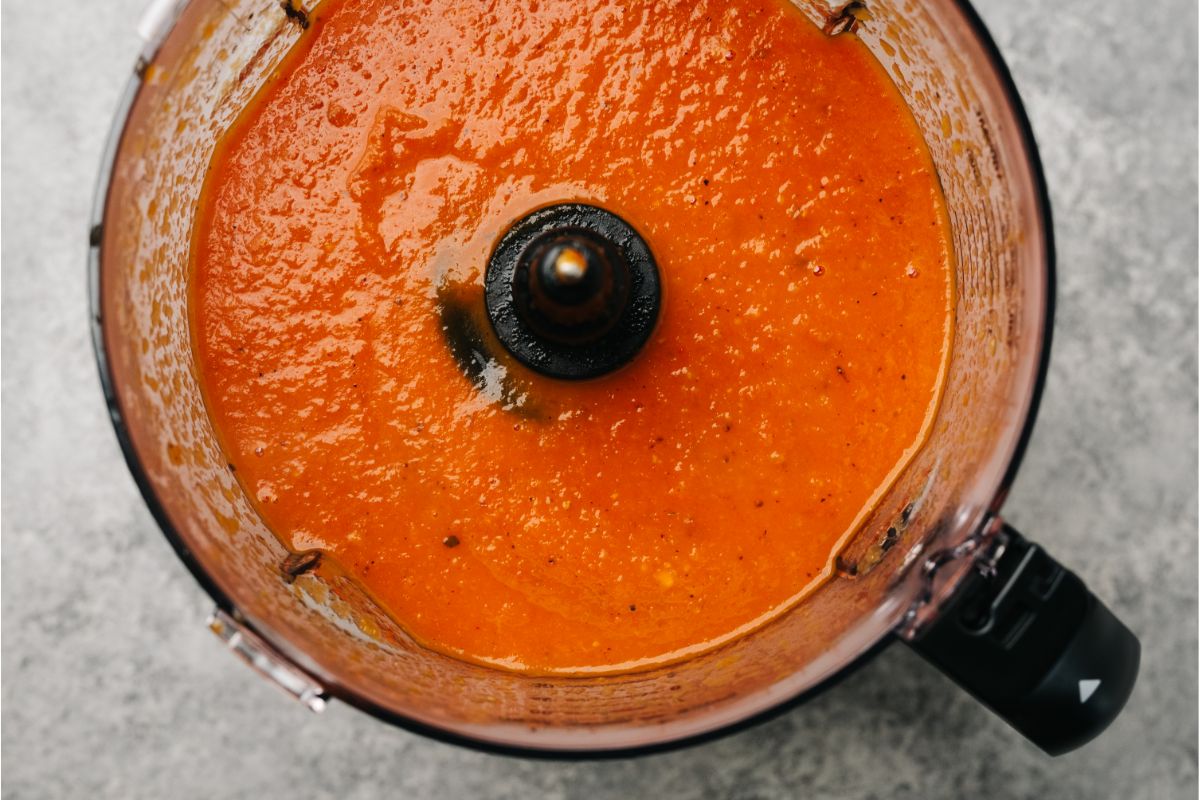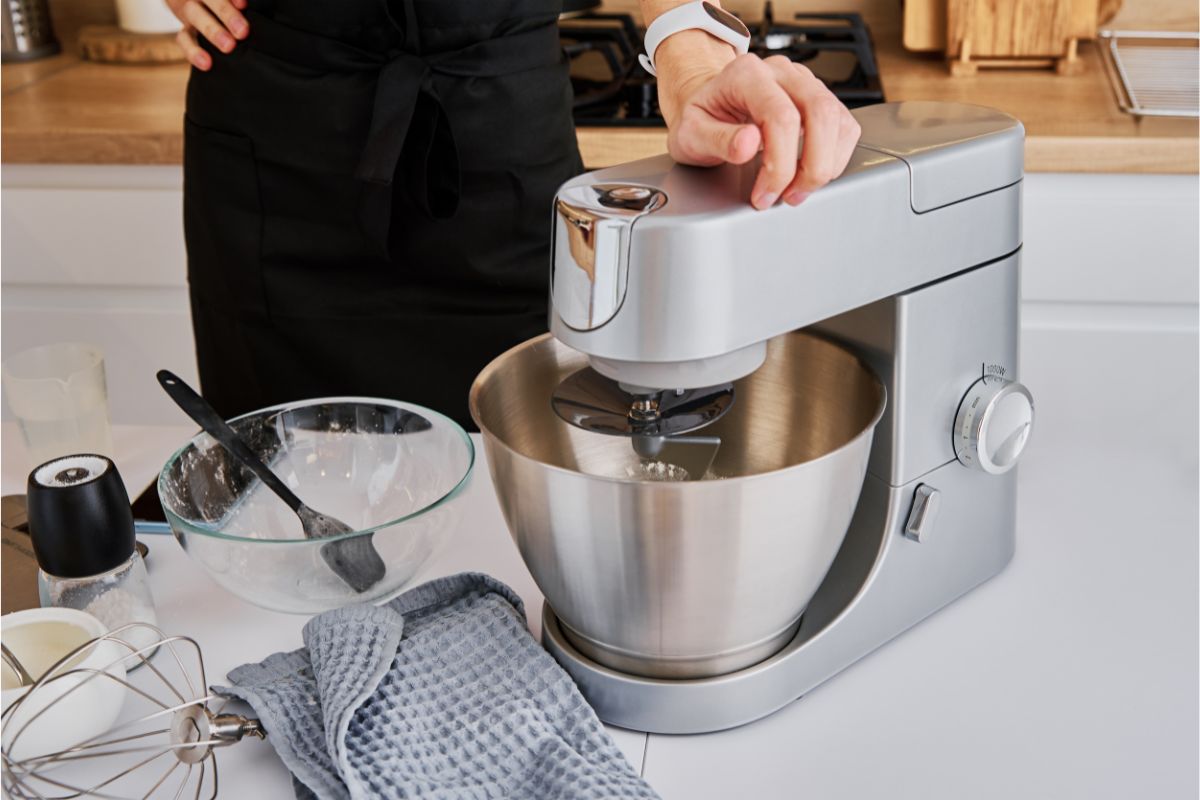One of the most versatile appliances in your kitchen is your food processor. It will mix ingredients, knead dough, chop vegetables and puree fruit. So you may be tempted to think that your food processor is suitable for all foods.

Unfortunately, that’s not the case. We have researched what a food processor can and cannot do. As a result we have found 7 foods you should never put in a food processor. Read on to find out what you should avoid using your food processor for.
Hot Foods
There are a few reasons why you should not put hot foods in your food processor. The first and main reason is that food processors are not typically designed to handle hot food.
The purpose of most food processors is to chop, mince, knead or mix cold foods. So when you put hot foods into a food processor you are actually damaging the motor. There are some food processors that are specifically designed for hot foods but most are not.
Putting hot food into a food processor can also cause the lids to expand and potentially leak. This may cause hot food to spill out and burn you. It will also create a mess which negates using a time saving device such as this when you end up cleaning the kitchen.
It is possible to put warm foods into a food processor, but it shouldn’t be done on a regular basis. If you do find yourself doing that frequently it is worth investing in a blender.
Liquids
If you need to process liquids then you should use a blender rather than a food processor. Blenders have better seals for keeping liquids from spilling out and are a better shape for dealing with non-solid foods.
All food processors have a fill line and if your liquids go further than this you will have a major spill event when you turn on the food processor.
It can be a little tedious if you have a lot of liquids to process and can only fit a small amount in the food processor without exceeding the fill line. You will have to do this in multiple batches which is time consuming and frustrating.
Very hot liquids, like hot foods, should be treated with caution when using a food processor. The heat from the liquid can cause the lid to expand and pop off, potentially showering you in hot liquid at the same time.
Most food processor manufacturers do not recommend using your food processor for liquids such as soup. These machines are more suited to dealing with chunky foods rather than smooth ones. If you intend to make a lot of soups, sauces or smoothies it is worth investing in a blender instead.
Freshly Baked Nuts
If you are hoping to make your own nut butter you may be tempted to put your freshly baked nuts in a food processor to puree them. This is not a good idea.
As we’ve already mentioned food processors generally aren’t made for hot foods, but there are other reasons for not using one for freshly baked nuts.
Putting very hot nuts into the food processor will create a gummy, oddly textured result, and it may warp and discolor parts of the appliance including plastic parts of the blade.
The best approach is to let the hot nuts cool down before putting them into the food processor. Remember to use a blade that is strong enough to chop up the nuts without getting damaged in the process.
Tough Meat
A food processor is ideal for chopping and mincing pieces of meat. It saves you a lot of time and effort in the kitchen, making more evenly sized pieces of meat than you could do by hand. However, there are some cuts of meat that don’t work well with food processors.
Tough meat are the cuts that have a lot of connective tissue, contracted muscle and fat.
The connective tissue is the silver colored skin you will see on some meat cuts. It is found inside the muscle and between the muscle and the skin. Cutting it off the surface doesn’t always help as it is often intramuscular fat.
Contracted muscle occurs if the animal is processed prior to it reaching rigor mortis. The resulting meat will be very tough. This is why meat is hung for a time after slaughtering.
The marbling of fat in meat can make it tough too. If there is a lot of marbling the ratio of meat to fat will be low.
These pieces of meat will not be processed well in a food processor, and it may strain the motor of the appliance. Instead, it is better to use a sharp knife to cut them.
Bone
Speaking of putting tough meat into a food processor you should also never put bones into one. Raw bones are very hard and will damage the blade and the bowl of the processor. It will also potentially cause the motor to overheat and can permanently damage it.

Cooked bones are brittle but most are still not suitable for putting into a food processor particularly something like a beef, pork, deer or lamb bone.
Chicken bones do get soft when cooked for a long period of time, and you may be able to process them with a good quality food processor. You may also be able to take the same approach with rabbit bones.
However, if you are going to do that you will need to cut them into small pieces so that your food processor isn’t put under undue strain.
Fruit & Vegetable Peel
When processing fruit and vegetables most of the time you will be peeling them first in preparation for the final dish. Occasionally, you may leave them unpeeled in order to get more fiber from them.
But some fruits and vegetables are too tough to be chopped up in a food processor without damaging the blade or overheating the motor. Fruits like pineapple have very tough skin as do melons.
Vegetables like pumpkin, winter squash and celeriac also have tough peels which could damage your food processor. If you want to put these fruits and vegetables into a food processor you should peel them first.
Many others can be put chopped up safely without having to first remove their skin but have stones in the middle.
Fruit such as peaches, avocado, nectarine, cherries, plums and apricots should have their stones removed before processing to protect your food processor blade.
If you are chopping up tough vegetables such as turnip in a food processor, cut it into small pieces first or your appliance may struggle to cope.
Ice
A food processor is one of the most versatile appliances in your kitchen and can chop, mince, grind and slice. But can your appliance crush ice? That depends on what your particular food processor is capable of.
In general, most food processors are not suitable for crushing ice and attempting to do so can cause the blade to become dulled.
As with other tough foods that you may try to process, putting ice into your food processor may place excessive strain on the motor. This can cause it to overheat or may actually permanently damage it.
Some food processors may be tough enough or have powerful motors which can cope with crushing ice. If you are unsure about the capabilities of your particular machine check the instructions or the manufacturer’s website.
Blender Vs Food Processor
For the foods that a food processor cannot handle you may find that a blender does an excellent job. This is particularly the case for liquids which is a blender’s primary reason for being.
So if you are making something to drink, drizzle or dip it is advisable to use a blender rather than a food processor. A blender will also be more likely to be capable of handling that ice that you need crushed.
A lot of blenders are made with glass which does make them heavier, but they will handle hot liquids better than a plastic one. If you only want a blender to make smoothies, and shakes then a plastic blender is fine but for hot liquids a glass one is better.
For chopping, slicing, grating and mixing a food processor is the best appliance in the kitchen and works best with cold or cooled down foods.
As a general rule for things that are going to be eaten with a fork a food processor is the best option. For drinks, sauces and dips a blender works best.
Final Thoughts
Food processors make our lives a lot easier in the kitchen. They save us time and effort and help us to create amazing dishes.
But it is helpful to also know what the limits of a food processor are so that you don’t damage it by using it for something it’s not suitable for. We hope this guide has been helpful.
- How To Reheat A Cheesesteak - November 5, 2023
- What Are Three Must Have Kitchen Knives? - September 22, 2023
- How To Protect Edges Of Pie Crust - June 15, 2023








